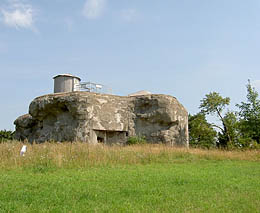
Czech Republic is a land of monuments, increasingly attracting interest in technical
 |
However, some industrial sites are successfully being saved, transformed into museums, tourist attractions, or sensitively rebuilt for other purposes. Former factory buildings can thus serve as galleries, cultural and commercial spaces, or even for housing.
Examples of technical monuments in the Czech Republic (alphabetically):
Baťův Canal - an artificial waterway from the 1930s connecting Otrokovice in the Zlín region with Rohatec in the Hodonín region.
Wastewater Treatment Plant in Prague-Bubench - an old Prague wastewater treatment plant from 1906, now serves as an Eco-technical museum. The protected site also contains a functional pump unit from 1903.
 |
Hammer in Dobřív (Rokycany) - a water hammer (mechanized water-powered forge), believed to have originated in the 16th century, is considered the most significant monument of its kind in the Czech Republic.
Hořín Lock on the Vltava (Mělník) - a unique technical monument from 1905 with an exhibition of original machinery.
Mining Museum in Příbram - reportedly the most visited technical monument in the Czech Republic offers over 40 exhibitions in historical buildings and branches; among them the mining open-air museum of Březové hory, Ševčín Mine, and Drkolnov Mine with a unique technical monument of global significance - a water wheel with a diameter of 12.4 meters.
Mayrau Mining Museum - at the skanzen near Vinařice in Kladno, you can also see a steam hoisting machine in its original engine room.
Horse-drawn Railway - the oldest railway on the European continent built between 1825 and 1832 connecting České Budějovice with Linz in Austria, extended to Gmunden in 1836; only remnants are preserved today.
Hradec Králové Hydroelectric Power Plant - the hydroelectric power plant known as Hučák is a complex of Art Nouveau buildings with a bridge over the Elbe, a tower, and a weir built between 1909 and 1912.
Pacold's Lime Kiln - in Prague, on the border of Velká Chuchle and Slivenec, stands a unique kiln according to the patent of Professor Jiří Pecold, which allowed for the processing of any limestone.
 |
Schwarzenberg Shipping Canal - one of the most remarkable water constructions in the Czech Republic was created in the late 18th century on the northern slopes of Šumava and served for floating timber; it connects the basins of the Vltava and Danube rivers and is the longest shipping canal in the Czech Republic.
Stádlec Bridge (Tábor) - the only preserved chain suspension bridge in the Czech Republic from 1847 to 1848; the empire-style bridge originally spanned the Vltava Valley at Podolí, was disassembled in 1960 before the filling of the Orlík Reservoir, and rebuilt near the village of Stádlec over the Lužnice River.
Old Forge in the Josefov Valley (Blansko) - a technical monument reserve, a preserved historical production facility demonstrating the technology of iron production in the 18th and 19th centuries.
The English translation is powered by AI tool. Switch to Czech to view the original text source.
0 comments
add comment
Related articles
0
22.05.2015 | The same bridge has been over the Vltava for 112 years, now it has been over the Lužnice for 40 years
0
18.07.2014 | Projects from the workshop: Fountain at the bottom of Hlubina
0
03.02.2014 | The H
0
18.02.2013 | The restoration of monuments with EU funds will be completed by the end of 2014
0
16.01.2013 | The Hlubina Mine is awaiting reconstruction for 192 million crowns
0
24.05.2010 | 25 years ago, the Empire chain bridge near Stádlec was reopened












